Specialist contractor McGree, working for Costain Skanska JV, is bringing down the office tower blocks One Euston Square and Grant Thornton House, which were both designed by architect Richard Seifert.
The two towers, at 40 metres and 60 metres respectively, were completed in 1971 but are now coming down to make way for HS2.
Latest images from the HS2 site at Euston show contractors at work on top of the towers, with four floors already removed.
Grant Thornton House and One Euston Square – completed by prolific and divisive modernist architect Richard Seifert - are set to make way for eleven new high speed platforms, with more space for passengers and better links to the London Underground.
HS2 – assuming it still goes ahead – will bring 1 new high speed platforms to Euston and more than double its capacity.
Over the last seven months, HS2’s early works contractor CSjv and demolition subcontractor McGee have wrapped the towers in an acoustic wrap designed to limit dust and noise. They’ve also stripped out the interiors leaving just the shell of the buildings.
HS2’s Euston programme director Rob Carr said: “HS2 has the potential to transform Euston, more than doubling the number of seats out of the station during peak hours, freeing up more space for commuter services and improving links to the London Underground.
“The complex demolition of these two towers will be a turning point for Euston - the first major change to the skyline for almost 50 years.”

The second stage of the demolition has now begun, with the team lifting excavators equipped with pneumatic breakers and hydraulic munchers to the top of the towers, where, 60 metres up in the air, they have begun gradually breaking up the structure of the building. Material from the building is then lowered by crane, or dropped down the former lift shafts in the centre of the building to limit disturbance caused by dust and noise.
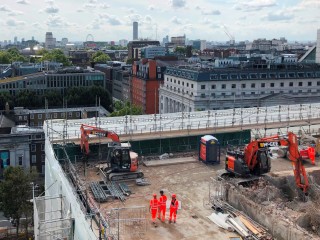
The work has been made more complex by the discovery of a huge 2.8 metre-thick heavily-reinforced concrete pedestal supporting the weight of One Euston Square. This feature is missing from the otherwise almost identical smaller tower and wasn’t discovered until specialist teams began stripping out the interior of the building.
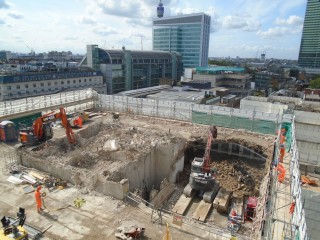
Over the next year, the two towers are set to be reduced to 28,000 tonnes of crushed concrete, with the material stored on site ready to be reused during the construction of HS2’s London terminus. In total, 98% of the structure is expected to recycled.
The towers are set to disappear at a rate of one floor every nine days, with both buildings due to get down to 1st floor level by January 2020.
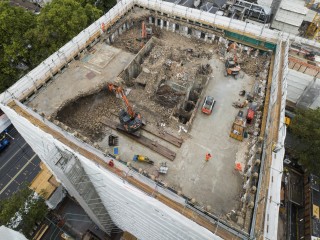
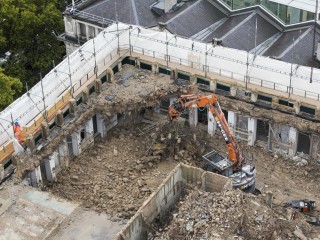
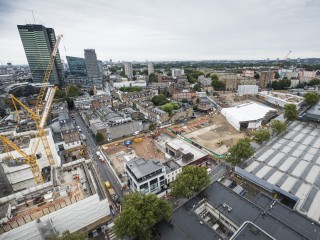
Got a story? Email news@theconstructionindex.co.uk



